Hearing Protection
Request a quote for otoplasticsHearing Protection
Request a quote for otoplasticsHearing protection is essential
It is well known by now that loud and/or prolonged noise has a harmful impact on humans. The hair cells in the cochlea that transmit sound to the brain become damaged and eventually die when exposed to high sound pressure for long or loud enough. This results in hearing loss, tinnitus (phantom sound) and hyperacusis (hypersensitivity to sound). Noise also has non-auditory health effects. Here, stress, blood pressure, cardio-vascular disorders, loss of concentration, overtiredness and irritability have become general keywords.
Countless organisations face such harmful noise levels in production areas. These organisations are therefore morally and often legally obliged to protect their employees from this. Besides a technical approach such as source control or administrative measures, such companies also choose to offer hearing protection. Here, the most logical choice goes to the safest and most comfortable type of hearing protection: otoplastics (custom-made earplugs).
Otoplastics
Otoplastics are the most comfortable type of hearing protection and therefore also the safest. In fact, comfort has a proven effect on user acceptance, making them worn faster and longer. By comfort, we first mean a good fitting. Our otoplastics are manufactured with extreme precision using the latest 3D technology, resulting in a perfect fit. Secondly, comfort is determined by good speech understanding and spaciousness. Tympro's filters are designed with these properties in mind.
Besides comfort, otoplastics are also the most durable and economical choice. Thanks to their long service life, waste is significantly reduced and direct costs for the company over their lifetime are lower compared to other types of hearing protection. Indirect costs also decrease as comfortable earplugs increase productivity and reduce absenteeism.
The Tympro Sound Safe is our set of custom-made acrylic earplugs. These otoplastics are fitted with a permeable tube filter, meaning that there is still a small opening through which the sound is still let through (albeit attenuated). This has the advantage that the sound is let through in a natural way, resulting in spaciousness, less distortion and therefore better speech intelligibility. In addition, the filter can be set to an accuracy of half a decibel depending on the sound environment and the need for communication. The setting is done using the digital Tympro meter.
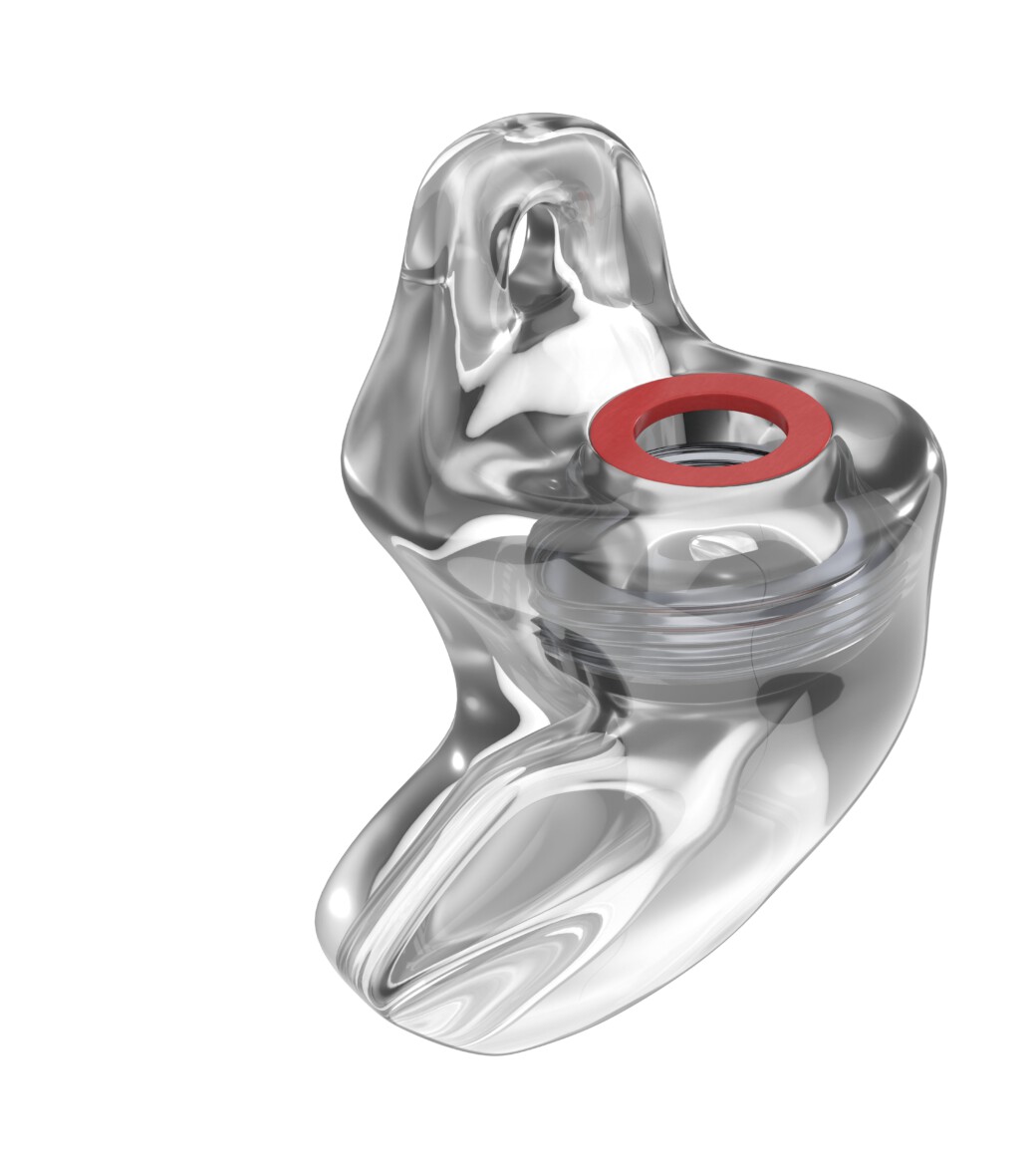
The Tympro Orange is our set of custom-made silicone earplugs that feature a large-surface breathable membrane filter. This attenuating membrane is designed to allow sound to pass through as naturally as possible. The natural transmission of sound benefits the understanding of complex speech sounds as there is less distortion. The sense of spaciousness is also maintained. Several fixed attenuation levels are possible, with the selection depending on the sound environment and the need for communication. A hard version of the Tympro Orange in acrylic also exists.
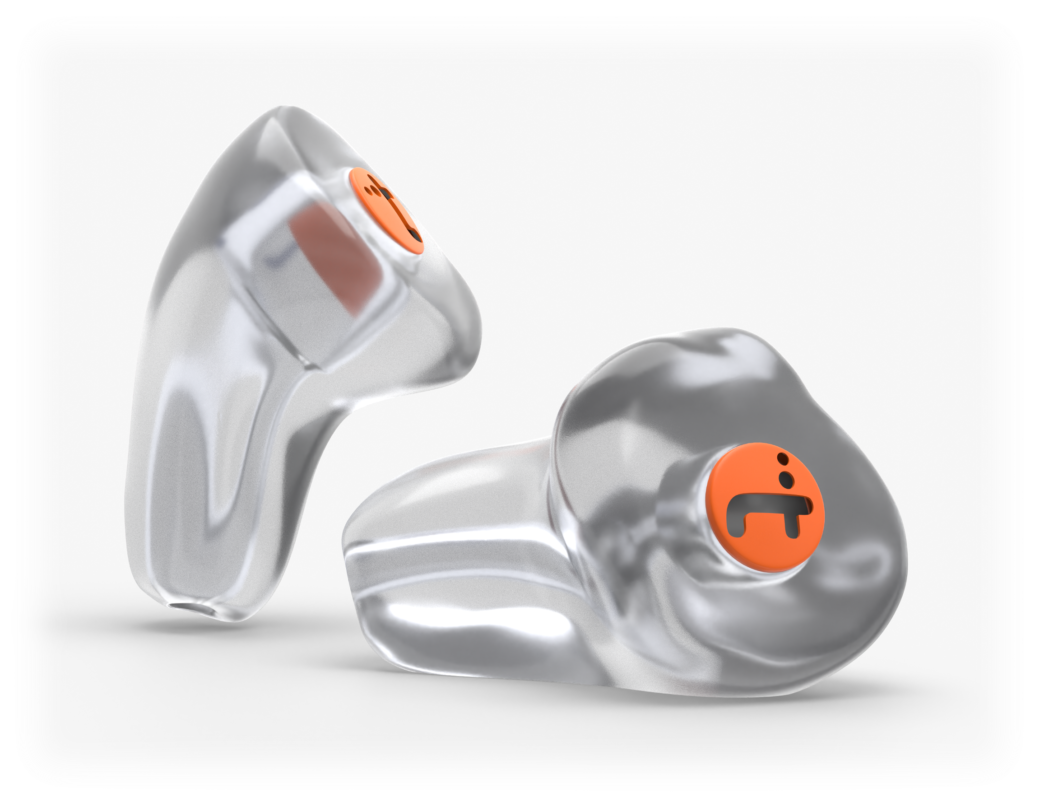
To ensure food safety, additional regulations apply in the food industry regarding hearing protection. Tympro offers such companies the Tympro Food, a variant of the Tympro Sound Safe. These otoplastics have the distinctive blue colour and feature a metal detectable ball. The version is standard in acrylic which makes them more cleanable and thus more hygienic than the silicone variant. Finally, these earplugs come with a detectable cord with clip as standard. Losing them is not an option.
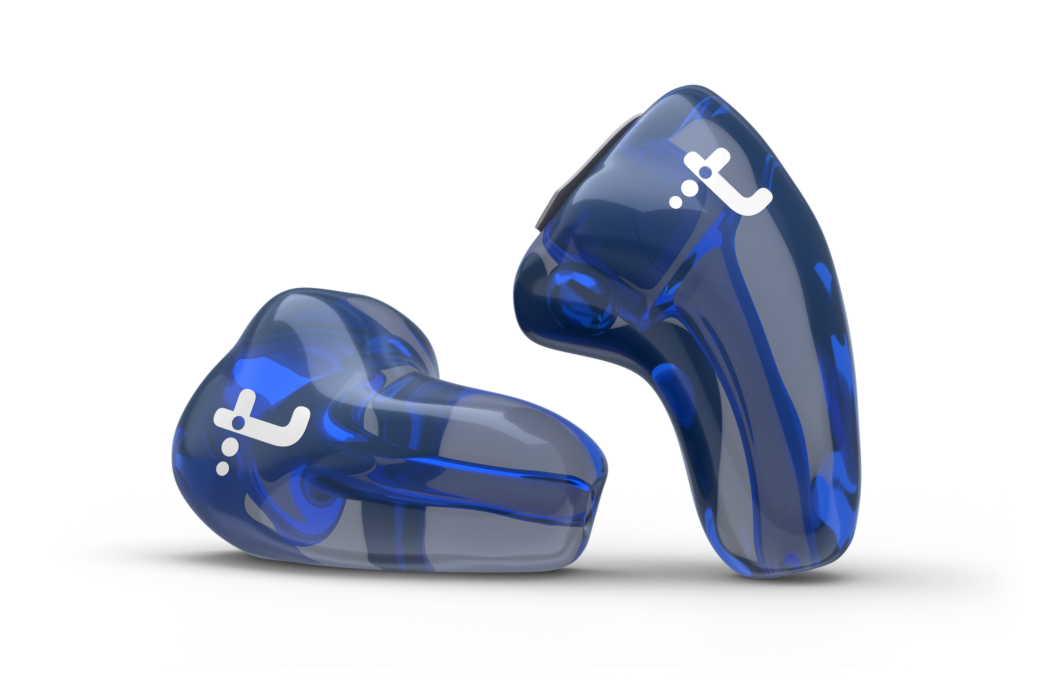
The Tympro Sound Safe and the Tympro Orange feature the Tympro Cord with Clip. The design is unique in that it allows the user to easily attach and remove the cord themselves. By pulling the end of the cord through the arch of the otoplastic, the arch will attach itself at the level of the recess in the cord. In addition, the thickening on the right side provides its own tactile and visual check for the correct position of the otoplastics.
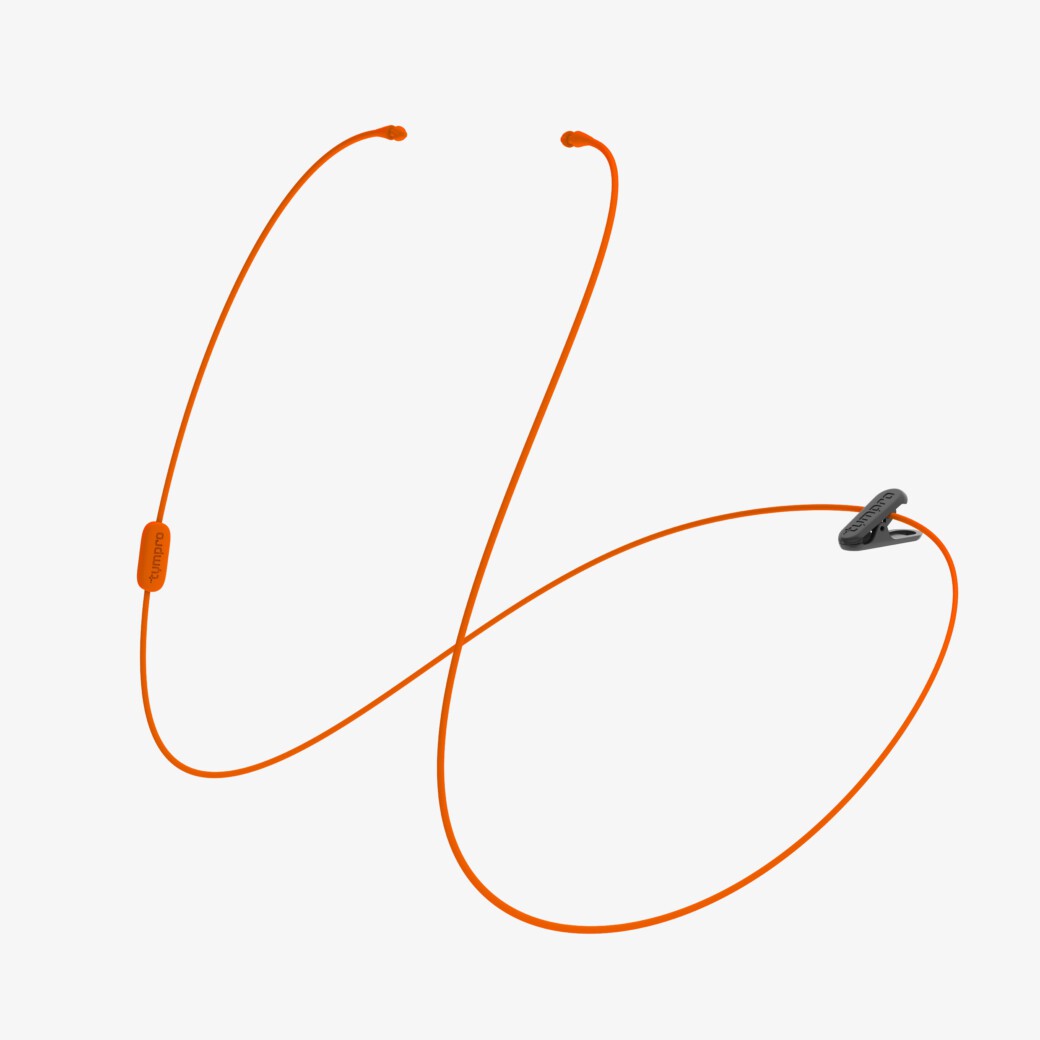
Maximum service
We go to extremes when it comes to service. On a regional basis, our customers have a fixed contact person from our office sales team and a product specialist from our field sales team. There is a well-oiled coordination between inside and outside sales, which ensures extremely efficient planning and support for the customer.
In consultation with the customer, the office staff schedule a time for the product specialist to visit the customer free of charge to take ear impressions. As soon as the earplugs go into production, a second time is scheduled for the product specialist to deliver the otoplastics on site. During delivery, the specialist gives clear instructions and performs a leak tightness test on the otoplastics.
Maximum comfort
Otoplastics with the perfect fit offer the most comfort in the ears. To achieve this perfection, Tympro monitors every step of the production process for quality. It starts with the periodically trained product specialist taking perfect ear impressions. The lab technicians employ the latest 3D and AI technology to scan the impressions, model the scans and finally print them out. During delivery, the product specialist tests the otoplastics for fit and leak tightness. The otoplastics are certified to EN 352-2 and the business process to ISO 9001.
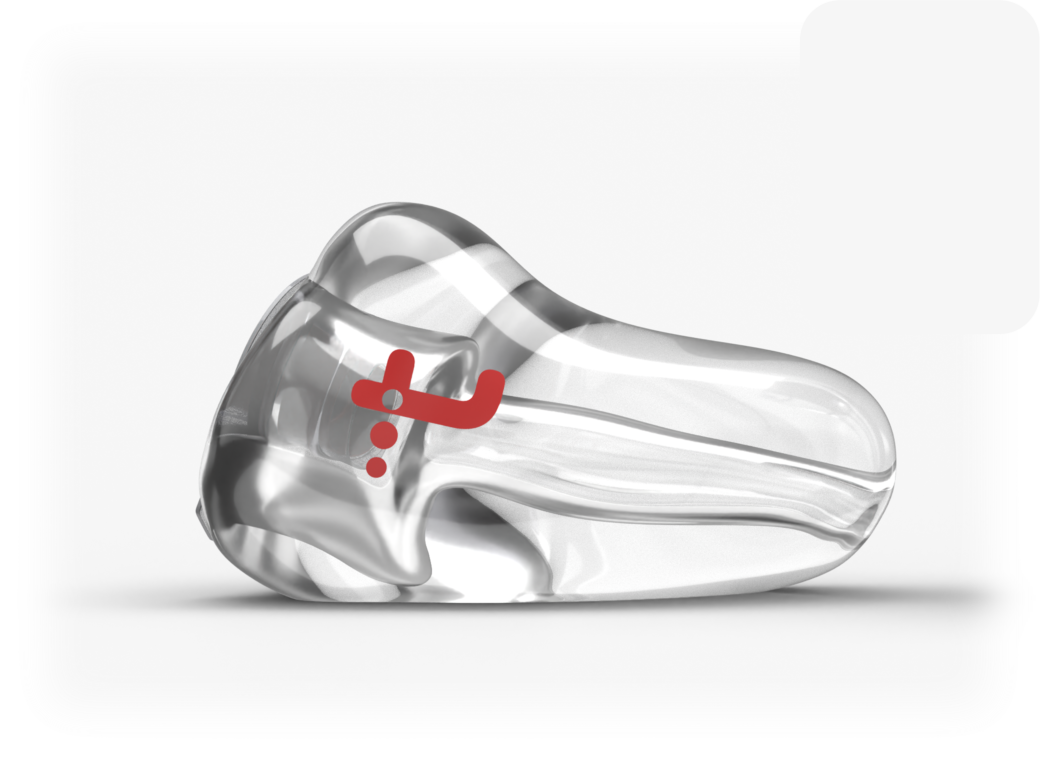
Annual maintenance
The shape and size of the outer ear are constantly changing. As a result, after a few years otoplastics no longer completely seal off the ear canals, creating a risk of leakage and thus a risk of hearing damage. The user often does not notice this himself. The leakage occurs at a different time for everyone. In addition, the inner structure of the otoplastics can become clogged with earwax or dirt, which affects the attenuation.
Because of this, Tympro recommends annual maintenance on otoplastics. For this, our product specialist comes on site for a 5-minute consultation per user. He enters into a dialogue with the user. He then performs a thorough cleaning, replaces the noise filter and resets the attenuation of the otoplastics. Finally, the leak tightness test will determine whether the otoplastics seal properly. The specialist makes new impressions only in case of a leakage or defect.
dOb Hearing Protection
While Tympro supplies professional hearing protection of the eponymous brand to organisations, it also has specialised hearing protection in its range for the private market: dOb Hearing Protection. For motorcyclists and handymen as well as musicians and festival-goers, there are dOb reusables or otoplastics with adapted sound filters.
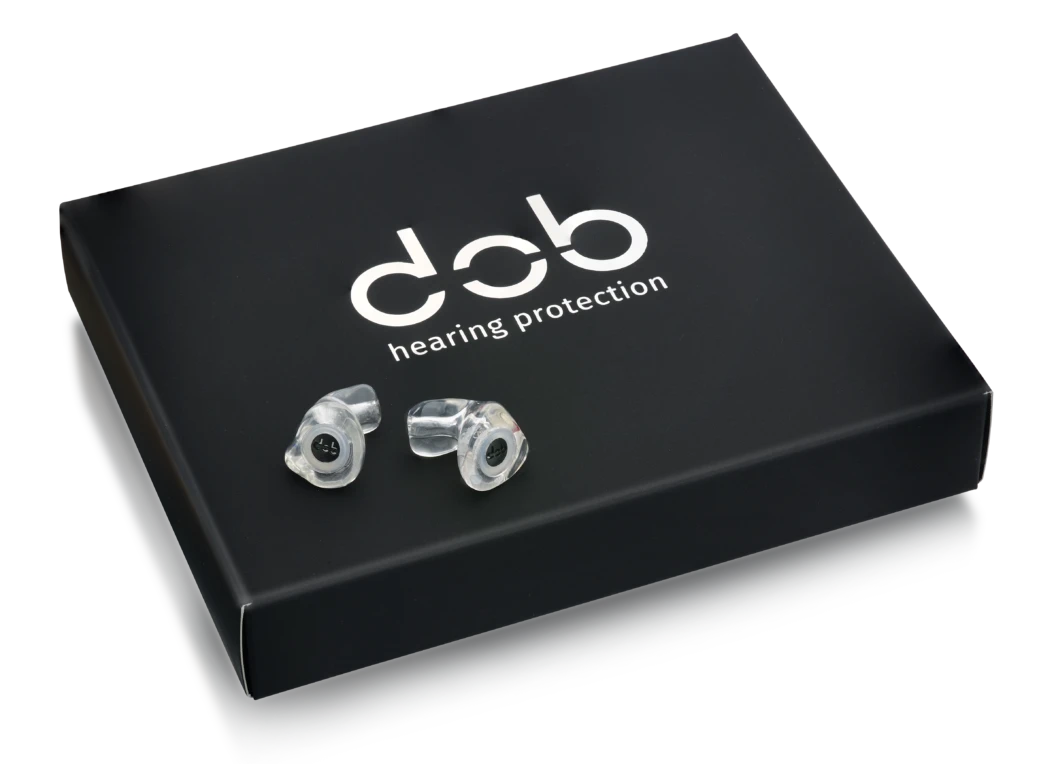
Frequently asked questions about our hearing protection and our service
Please contact us via email, telephone or via the website. We will then contact you and ask some questions about your company, its users and specific needs. Based on this we will prepare a quotation. After you agreed, you must complete a client form. In consultation with your contact person from our office staff, we will choose a time when the product specialist from our field staff can go to your site. The product specialist will be able to measure ten people per hour. The ear impressions are processed in our lab, after which an appointment is scheduled to deliver the produced sets. Upon delivery, an instruction is given and the otoplastics are tested for leak-tightness.
The lifespan is more or less determined by the user. Everyone's external anatomy changes in their own unique way and speed. That is why it is important to have the otoplastics tested every year to determine if it is still leak-proof. In the one person they will leak after 7 years, in the other after 2 years. The average lifespan is 5 years. But still, this has more to do with the user than with the quality of the product.
The maintenance session will be completely useless without the users. The most important part of the maintenance is the leakproof test. During this test, the product specialist tests whether the otoplastics still blocks the ear canals adequately. In addition to this, the dialogue between the user and the product specialist is very important. Based on the experience, adjustments, such as the damping, can be made.
The product specialist delivers the otoplastics on site. Upon delivery, an instruction is given and the otoplastics are tested for leak-tightness. If the otoplastics show a leak, new ear impressions can be taken immediately. The user can also immediately indicate whether the otoplastics feel good or not. The specialist also supports the user in the exercise to insert the otoplastics properly. We therefore strongly recommend a presence of the users. Suppose someone is unexpectedly absent, we leave the otoplastics set up and test them during another appointment.
The hard otoplastics are made of acrylic. These glide easily over the skin and are therefore easier to insert. Hard ones are especially recommended for use in the food industry as they are easier to clean.
The soft otoplastics consist of silicone material and are therefore more flexible. These are especially recommended for work situations where a helmet is worn over the hearing protection. The soft version is more vulnerable and has a shorter lifespan.
The external anatomy of the ear changes in a unique way and speed with each person. This means that the otoplastics of one person already leaks after 2 years and of the other only after 8 years. For example, if a company decides to replace all otoplastics after 5 years, the first person will have walked around with leaking earplugs for 3 years with the associated harmful consequences. With the second person, the otoplastics are replaced unnecessarily and the company incurs unnecessary costs. It is therefore strongly recommended to test otoplastics for leak-tightness at least annually. In addition, during a maintenance appointment, a dialogue is created between the specialist and the user, and any problems can be addressed and resolved.
The otoplastics are delivered within 4 weeks after the time of measurement. Tympro takes care of the delivery itself, whereby the specialist gives personal instructions to the new user and performs a leak-tightness test on the otoplastics. The leak tightness test is only possible if the user is present, as the otoplastics are tested in the ears.
If the employees are exposed to an average level of 85 decibels or higher for 8 hours or if peak noises are present that exceed 137 dB(C), the exposed employees are obliged to wear hearing protection.
When determining the damping values, first and foremost, the protective base is taken into account. This is determined based on the sound levels in the company. We base this on noise reports prepared in the past by us or by another party. If there are no measurements of this, we will make an estimate based on the industry and activities. Secondly, the avoidance of overprotection (too large attenuation value) is always taken into account, which in itself leads to higher acceptance of the hearing protection, which is of course beneficial for hearing health. The manageable attenuation values of otoplastics have an adjustment range between 20 dB and 35 dB.
The auditory canal has a self-cleaning mechanism whereby earwax is expelled naturally. In some people, this process regularly goes wrong and earwax continues to accumulate, causing a hardened cerumen plug.
A clogged ear is an important reason for not having a fitting. If the product specialist wishes to insert a cotton wool and inject mould paste into the ear canal, there is a risk that the hard and sometimes sharp cerumen plug will be pushed in even further and damage the eardrum. In addition, the ear impression will not be representative enough to make a good otoplastic from it.
If Tympro will visit soon to take ear impressions, it is advisable for people who regularly have cerumen plugs to visit their GP (just) before the appointment to remove the cerumen plug. Otherwise, there is a risk that the staff member and the product specialist will have to make a second fitting appointment with each other. So keep each other well informed about Tympro fitting times.